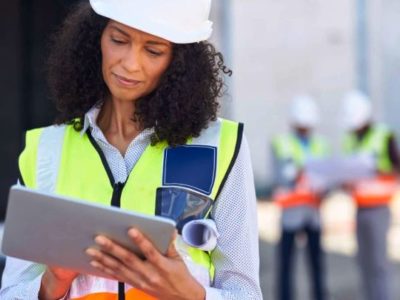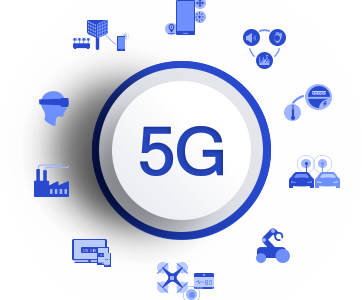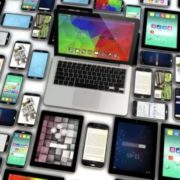Metaverse explained
Imagine a shared virtual universe, where the digital and physical fuse together to create unprecedented opportunities that redefine the very way we live, work, play and socialize. While the next decade is set to be marked by massive technological progress, it will be the coming together of cutting-edge innovations in software, semiconductors, the Internet of Things (IoT), blockchain, virtual reality (VR), augmented reality (AR), digital twins, artificial intelligence and machine learning (AI/ML) that will trigger the creation of a transformative digital space.
RELATED: Five facts about the Metaverse you need to know
Enter the metaverse, a highly interactive three-dimensional virtual domain where real-world conditions can be simulated by combining a multitude of Internet functions. It is a spectrum of digitally augmented worlds, realities, and business models. In the metaverse people can use personal avatars to seamlessly execute all kinds of activities, whether work or recreation in a truly immersive digital environment.
Despite the ongoing debate over the definition of the metaverse, there is hardly any doubt on how the technology will spearhead the evolution of the Internet in the future. According to the technological research and consulting firm, Gartner, by 2026, 25 percent of people will spend at least one hour a day in the metaverse for work, education, socializing, entertainment and shopping.
With time, engagement will rise as the metaverse becomes device independent and goes beyond the confines of a specific location – untethered from Wi-Fi or wireline connections – and grow into an all-pervasive entity. The benefits it will bring are astonishing. The metaverse will negate geographical distances, envelop users in deep immersive experiences, enhance social interaction, improve healthcare, education, gaming and generate novel business opportunities through the creation of virtual economies and currencies. Citi estimated the total addressable market for the metaverse economy could grow to between $8 trillion and $13 trillion by 2030. It would also reshape consumer behaviour and industrial production. Not to mention, it will also have a significant positive impact on sustainability practices.

Nokia Technology Vision 2030 in metaverse
How will the metaverse emerge?
The metaverse will emerge out of two broader trends – human augmentation and the fusion of digital and physical. It will further expand by 2030 as every connectible physical device is connected. The primary objectives of human augmentation are the improvement of human-computer interfaces and the creation of fully immersive experiences. Add-ons such as VR goggles, extended reality (XR) glasses, remote-controlled haptic feedback and brain-machine interfaces will enable users to interact in the metaverse.
Digital-physical fusion entails the creation and manipulation of dynamic representations of real-world objects, systems, and processes in the digital world. Digital twins of vehicles, warehouses, and production lines are already used by modern manufacturing and logistics facilities to increase output, lower costs and improve worker safety. By 2030, this technology will be widely used across businesses. Ubiquitous, next-generation networking will make this happen.
The building blocks to bring the metaverse ecosystem into reality are being put into place. The way it will work is still being defined. Nonetheless there are myriad issues that need to be addressed. For instance, developing the appropriate hardware and software, ensuring interoperability, standardization, pre-empting legal and commercial bottlenecks and the most vital aspect, deploying a robust and powerful network that will power the metaverse.
While many aspects of the metaverse are still surrounded by much hype and little clarity, the two key technology supersets that provide the foundational support to the metaverse are Web3 and cloud, especially edge cloud. Cloud computing forms the bedrock for digital transformation across all sectors and the focus, increasingly, is on making network infrastructure wholly cloud native and primed to take advantage of a distributed cloud-based architecture.
Another crucial aspect that needs to be taken into consideration pertains to efficient multimedia distribution without which there will be no metaverse. As content starts taking complex shape and form, the services delivering such experiences like 360-degree video streaming, spatial audio communication and ultra-low latency video applications, need to be fit for purpose.
Multimedia standards – Moving Picture Experts Group (MPEG) and 3rd Generation Partnership Project (3GPP) – play a major role in enabling interoperability between devices and services. For instance, MPEG-I and versatile video coding (VVC) will pave the way for truly interactive and immersive metaverse experiences.
Not one but many metaverses
Nokia believes there will be multiple metaverses and not one. Each of these will cater to different customers, companies and communities. They fall under three broad categories: industrial, enterprise and consumer.
These metaverses will have commonalities, connect to each other at varying degrees and share technologies, devices and interfaces. Yet they will differ when it comes to applications and business models.
Industrial – Some of the most significant and extensive potentials of the metaverse lie within the industrial sector that serve as the backbone of our economies. Although technologies related to the industrial metaverse are still in their initial stages, it has already become a force of business innovation. The digital twin is one such example that blends digital and physical realities and is revolutionizing many industries, ushering in cost, productivity, safety and flexibility gains.
In the next few years, industrial operational technology (OT) systems will begin merging with the metaverse for monitoring and analysis and direct control of operations. Additionally, industries will gain the ability to reconfigure their operations to constantly evolving supply and demand. Industrial and enterprise metaverses will invariably interact. A single product from the same company will pass through both as it moves from the drawing board to the factory floor. As IT systems in headquarters merge with OT on the factory floor, the distinctions between these two business-focused metaverses will blur.
Enterprise -The availability of better communication and collaboration tools along with XR and VR technologies is helping enterprise metaverse to take shape. It is poised to take over core productivity applications that make business function and link up with its industrial peer, merging the IT systems at HQ to the OT systems on the shop floor.
Consumer – There is considerable buzz surrounding the consumer metaverse, but the concept suffers from the dearth of application ideas and business models. Some noteworthy progress in gaming and VR social media is taking place but progress will depend on a host of other considerations, including, the size, form factor and cost of VR headsets and the lack of mobility in XR. These drawbacks could hold back the consumer metaverse from realizing its full potential.
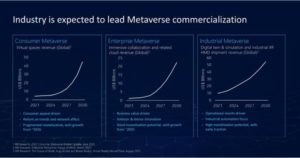
Network driving the metaverse
The metaverse with all its enormous capabilities cannot thrive without a powerful and omnipresent connectivity architecture. Hence, the network will be the decisive enabler of the opportunities we expect the metaverse to deliver. “We need robust, flexible and extremely powerful networks. We need significant advances in latency, bandwidth and speed,” says Nishant Batra, Nokia’s Chief Strategy and Technology Officer (CSTO). “We have already laid the connectivity foundation with 5G, but we need a continued network evolution over the next 10 years for the full metaverse ecosystem to thrive,” he adds.
The networks of the next decade will need to deliver optimal connectivity and massive capacity and scale if they were to cater to the rising demands of the metaverse. Private specialized wireless, 5G-Advanced and 6G will underpin the metaverse as it expands across all sectors.
Today, 5G gives us a sneak peek into how the metaverse will work by supporting many initial industrial AR use cases with specialized headsets and consumer AR applications over smartphones. The real change will come with the deployment of 5G-Advanced from 2025 when XR is truly unleashed. The sheer power of the network will help free the metaverse from indoor settings. More uplink bandwidth and better latency will mean amplified immersive, near-photorealistic visual overlays and superior responsive interactions. Capacity improvements will support large volumes of simultaneous XR users and facilitate the mapping of larger and more sophisticated digital twins.
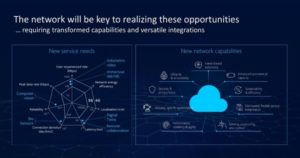
Collaboration is key
With the arrival of 6G in 2030, the metaverse will take a generational leap, granting the ability to directly manipulate the physical world through digital means. 6G will pave the way for enhanced network intelligence and application awareness, as well as increased uplink capacity and reduced latency. As a result, an infinite number of users are exposed to exceptionally immersive holographic metaverse realities, which they experience synchronously and persistently. By 2030, XR will have become ingrained in industry and enterprise, heralding the start of the consumer XR revolution as glasses are mass-produced at low cost. The unique sensing capabilities of 6G will enable the network to create digital twins of every physical aspect in real-time.
All of this leads us to recognize that the metaverse cannot be exclusive. It is a massive undertaking that will necessitate a global effort and ecosystem-wide collaboration. To be successful, the metaverse must be open, safe and secure, environmentally sustainable and all-inclusive, inviting diverse players into a digital community that encourages innovation and translates to more value for all involved.
“No one will be able to own the metaverse. We need collaboration to build it and to ensure it achieves its full potential,” says Pekka Lundmark, President and Chief Executive Officer (CEO) of Nokia.






